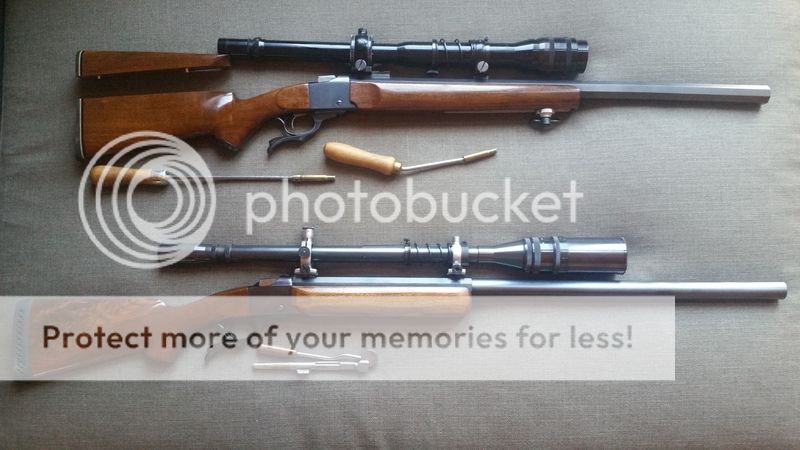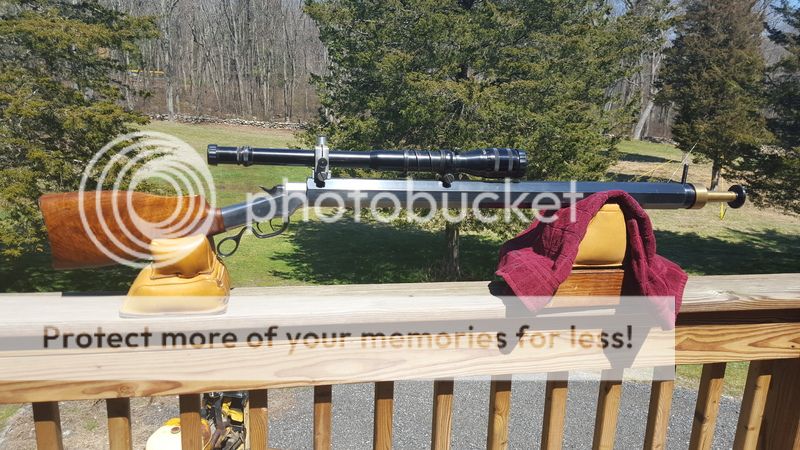bikemutt
Member
I have a current production No. 1 stainless rifle chambered for .223 Rem which is not a bad shooter, let's say MOAish with quality ammo, like Black Hills 69 gr MatchKing.
I know there are many theories, and no doubt facts, which may explain accuracy issues with some No. 1s, the usual canard around here is they're either accurate or they're not.
The most common reason for less-than-stellar accuracy I've heard is the forearm is not free-floated from the barrel. Indeed, mine is free-floated all the way out to the front of the forearm, then it's locked tight to the barrel. I'd estimate the amount of wood in contact with the barrel at about 1" or so.
Anyway, I wondered if I could test the theory by shooting the rifle without the forearm installed? There's plenty of real estate close to the receiver to rest the rifle on a bag.
Another thing I wondered about is what if the area of contact between the front of the forearm and the barrel were to be a single, tiny point instead of 1" of wood? Imagine a small ball bearing cut in half, a hemisphere. A dab of crazy glue would hold the flat size to the forearm, there would now be a vanishingly small contact point between the two.
I'm just trying to think up things to try without hacking on the rifle, MOAish isn't bad enough for me to wrench on a beautiful, and expensive gun.
I know there are many theories, and no doubt facts, which may explain accuracy issues with some No. 1s, the usual canard around here is they're either accurate or they're not.
The most common reason for less-than-stellar accuracy I've heard is the forearm is not free-floated from the barrel. Indeed, mine is free-floated all the way out to the front of the forearm, then it's locked tight to the barrel. I'd estimate the amount of wood in contact with the barrel at about 1" or so.
Anyway, I wondered if I could test the theory by shooting the rifle without the forearm installed? There's plenty of real estate close to the receiver to rest the rifle on a bag.
Another thing I wondered about is what if the area of contact between the front of the forearm and the barrel were to be a single, tiny point instead of 1" of wood? Imagine a small ball bearing cut in half, a hemisphere. A dab of crazy glue would hold the flat size to the forearm, there would now be a vanishingly small contact point between the two.
I'm just trying to think up things to try without hacking on the rifle, MOAish isn't bad enough for me to wrench on a beautiful, and expensive gun.






